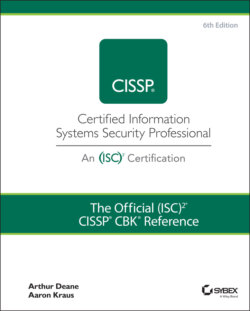Читать книгу The Official (ISC)2 CISSP CBK Reference - Leslie Fife, Aaron Kraus - Страница 100
Standards
ОглавлениеStandards are specific and granular requirements that give direction to support broader, higher-level policies. Standards establish specific behavior and actions that must be followed and enforced to satisfy policies. Standards may be mandatory for a given organization, if mandated by contract or law. The Federal Information Processing Standards (FIPS), for example, are publicly announced standards that were developed by NIST to establish various security requirements for U.S. government agencies; FIPS 140-2, for example, is a standard that establishes security requirements for cryptographic modules. Within this standard, there are specific encryption devices that are permitted and prohibited for use within U.S. government systems.
Baselines are related to standards and establish a minimum level of a security for a system, network, or device. For example, your organization might maintain individual baselines for each operating system that the company uses. Each of these baselines should identify what specific settings, applications, and configurations must be in place to meet your company's security standards and policies. While not specifically called out in the CISSP CBK, you should be familiar with baselines and understand how they fit into the bigger picture.
As a subset of baselines, security baselines express the minimum set of security controls necessary to safeguard the CIA and other security properties for a particular configuration. Scoping guidance is often published as part of a baseline, defining the range of deviation from the baseline that is acceptable for a particular baseline. Once scoping guidance has been established, then tailoring is performed to apply a particular set of controls to achieve the baseline within the scoping guidance. Scoping and tailoring is further discussed in Chapter 2, “Asset Security.”
